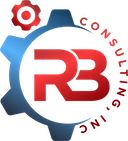Velocity and speed come in two ways. You can increase power, or you can reduce drag. We can find ways to address both of these aspects to solve a problem faster. Some of these may be obvious. However, I often find many to be overlooked regularly. That may come from rushing through the process or even institutional and cultural limits.
More Than One Way To Solve A Problem
Most problems have multiple solutions. Likewise, some are going to be better than others. Therefore, do not let perfect be the enemy of good. The first solution is at least a solution. That is more than you started with. That may be all that is needed. A better solution may be the goal—however, version 1.0 of a solution is better than nothing at all. There is also the option to build on that first solution. When you keep going back to the drawing board, you limit what you start with. Sometimes getting close to a solution provides a foundation or watershed moment. When that happens, you can start the next effort closer to the end. It is like climbing a mountain in stages instead of one herculean effort.
Remove Drag
We can start by removing drag on our problem-solving approach. However, let’s first think about what drag is. It is anything that causes friction or otherwise slows down an object or process. That includes things that may take the progress off course. For example, a river may re-route itself if something causes enough drag. Likewise, your GPS may re-route you if there is too much friction in the form of a traffic jam or accident. Now indirect progress may not exactly be a drag, but it works for our purposes.
The biggest drag I have found in all my years of work to solve a problem (big or small) is misdirection. That may come in the form of going down the wrong path or even solving the wrong problem. The simplest example of this is trial-and-error. Every error (wrong path) slows your speed to a solution. The sooner you get on the right path, the quicker the problem is solved. That brings us to our first key point.
Ensure You Have The Correct Problem
That may appear to be an obvious starting point. Nevertheless, it is a common mistake. Humans are known for confusing cause and effect. Likewise, we all have moments of focusing on the wrong aspect of a situation missing the root cause. We sometimes even solve a problem that does not exist. We assume trends where there are none. Start your process by stepping back and examining how the problem arose or manifested. It is easy to get off track and lose a lot of time chasing after requirements that are not needed. When possible, ensure you can reproduce the problem/error. Then, verify the solution actually addresses it.
A tangent struggle to this is assigning blame. There are many times blae is chased down first. However, that does not solve the problem in most cases. Therefore, work on the problem first, then worry about heads rolling. Reviewing why a problem occurs or occurred can have limited use. Rather than focus on what happened, keep the focus on how to avoid it in the future.
Fail Fast Fallacy
The idea of failing fast is popular among some circles. That often is used as a way to remove analysis and push to try things out. Yes, trial-and-error can be useful. However, random is not as good as a focused approach. We have to find a balance between quickly verifying potential options and overthinking their value. We are not going to increase velocity to solve a problem by quickly removing options unless they were valid in the first place. Each successive failure should be methodically moving us toward the solution. Thus, we can think of it as a mortar fire walking in the charges to the target. There will be attempts that take us away from a solution, but that means we go back and try another direction.
The Single Step
The is an old saying that a journey of a thousand miles starts with a single step. That is true every step of the way. We can think about a problem and discuss it, and even rehash it. However, we are not going to make progress on a solution until we start work on that. There is a time to think and time to act. Make sure you understand what time it is and you will get to that solution faster. You might even reach it faster than you thought.




